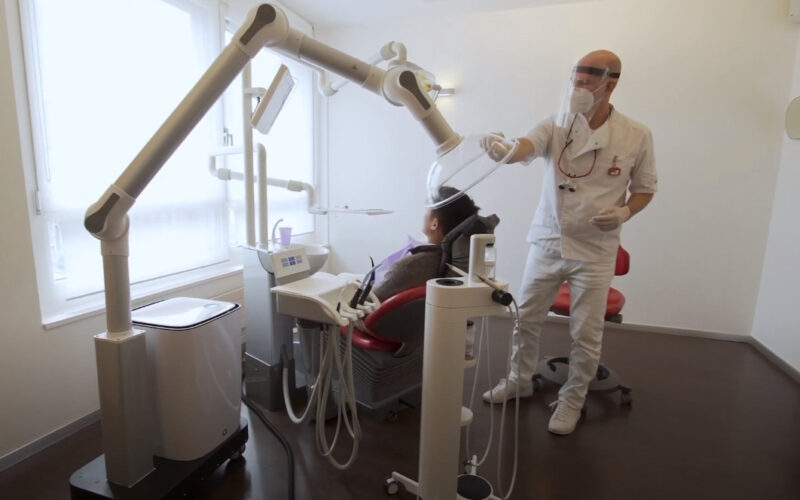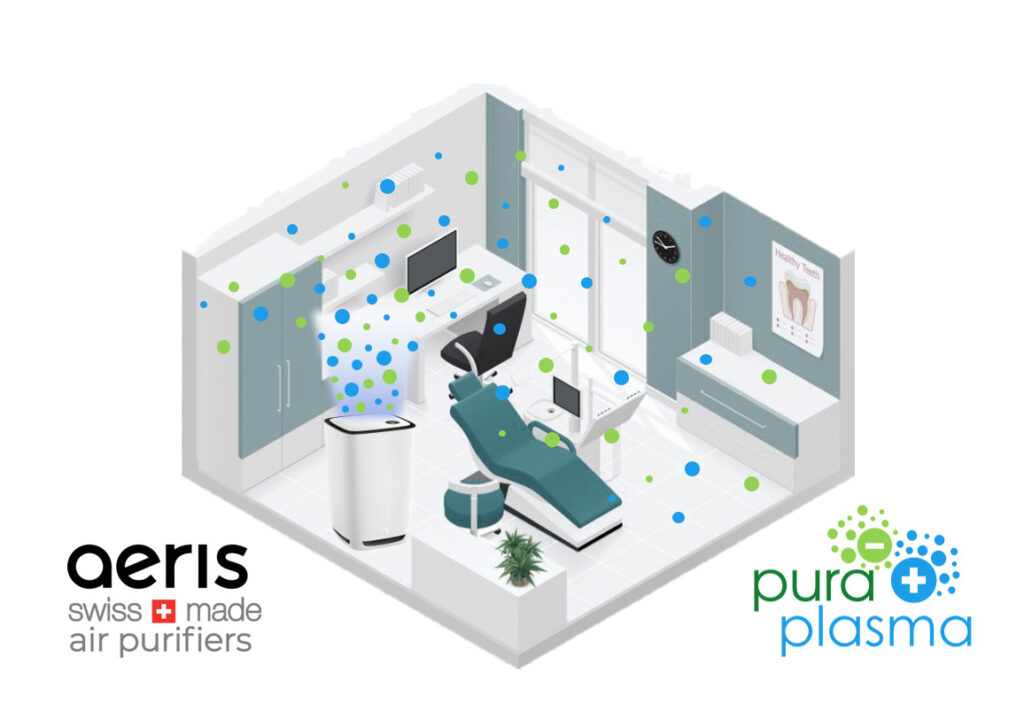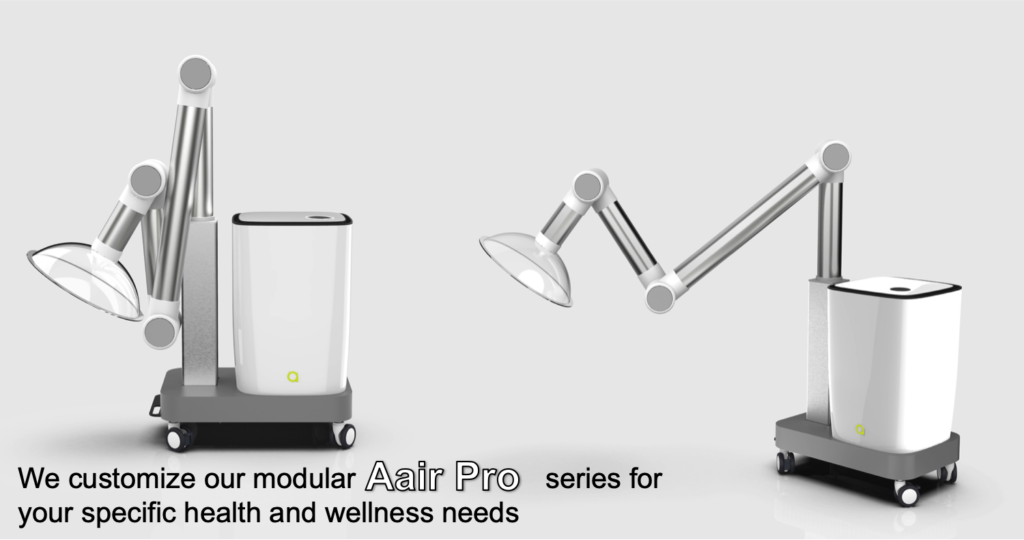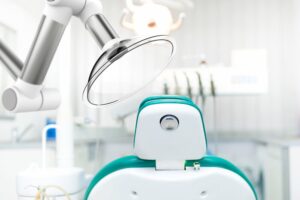The Importance of a Quick Cleaning Dental Air Purifier

Time Matters.
Our Medical Infection Control Air Purifiers strive to address ALL concerns specific to the dental clinic. This includes keeping surfaces free of viruses, bacteria, spores, fungus, and mold. What is key in a dental air purifier along with reducing all of the listed pollutants, is the time between allowing patients to enter your dental operatory.
If you are interested in an Aeris Dental and Medical Control Infection Purifier, they will be available soon! Please visit our Dental page and fill in the form at the bottom to be contacted!
If you have been searching around for an air purifier specific to your dental practice, you’ll have read and heard quite a bit about how quickly (or slowly) an air purifier cleans the air. This is the new standard, how fast the air is cleaned is essential.
Let’s examine.
The risk of catching a sickness through airborne particles depends on the total amount of bacteria, virus, pollen or dust you inhale. Virologists define the minimum quantity of viruses inhaled to actually get infected as the “infectious dose.”
Now, the amount you inhale is affected by two things:
-
The concentration of the infectious agent suspended in the air.
-
The time you’re exposed to that infectious agent.
Aeris is a Swiss-Made company that works hard to develop and manufacture their own products. They have always emphasized that reducing the concentration as fast as possible is an important way to protect humans from exposure to bad pollutants.
If we take a simple scenario where a sick patient enters a non-ventilated operation or examination room, coughs in it, and then leaves the room, if it’s an airborne virus then micro particles created by the sick patient’s cough will linger in the room for hours if they’re not removed.
So if the next healthy patient or hygienist enters the room, he or she’s exposed to immediate risk of infection. This is the same for aerosols from drilling into a patients tooth. To strongly reduce this risk of infection and make sure these rooms can be used efficiently, an air purifying system has to remove the airborne particles within the shortest time possible. This is, in fact, exactly what hospitals do in order to minimize the risk of the spread of infection.
A critical way to measure purification speed of an air purifier is to calculate the time necessary to reduce the concentration of a pollutant to half of its initial value: the “half-life time.” Half-life times should be compared on standardized tests, where the environment and test settings are the same for all machines.
Another important factor is the size of particles you’re testing on. The particle size should mimic the actual infectious agent. We like to compare products on 0.1 micron size as it’s equivalent to many of the common bacteria and virus sizes. One such test, the AHAM AC-1, for example, tests on 0.1 micro particles and provides the purification data for a 1008 cubic feet room.
Our Dental model will filter with 99.995% efficiency at 0.1 microns, exceeding the 0.3 micron rating of most dental units currently on the market. Proprietary Zinc Mineral and Silver Ion technology incorporated into the filters and housing that will kill and disintegrate microbials. The Silver Ion technology has been tested on the Feline Coronavirus showing 99% reduction of the virus on the test filter surface within 1 hour. The Feline Coronavirus belongs to the Coronavirus family strand and can be regarded as proxy to the SARS-COV-2 virus. No other manufacturer we have seen to date has gone to this extreme to protect dentists and staff. What we have seen is cardboard framed filters in dental air purifiers – a harbour for microbial growth in addition to electronic air cells that charge particles and increase their risk of depositing into the respiratory tract (according to the EPA)!
The Aeris Dental Purifier will also have Plasma!!! The EPA has Plasma Technology listed for its ability to Sterilize and/or Kill Airborne/Colonized Microbials, Viruses, and Bacteria.

What’s the link between the cleaning speed of an air purifier and the New Coronavirus?
One of the things that’s gone unspoken so far, but which of course we are all deeply concerned about, is COVID-19. Do the same principles apply? If so, how?
As it turns out, a number of studies on the decay of the virus in and on different substances have been done.
The longer the overall decay of the virus takes, the higher the concentration will be in the substance. Higher concentrations of the virus in a substance also means that if being inhaled or swallowed by a human, a higher virus load is consumed which leads to a higher risk of infection. It has not been established what exact virus load for Sars-Cov-2 is necessary to infect a human being, but it’s clear that minimizing the viral load in substances exposed to humans to a minimum is essential to stop the virus from spreading.
In other words, if the virus survives in suspended air particles then it’s clear that removing these air particles or blocking those particles from being inhaled is essential for infection control.
Unfortunately, at present there is no known method to immediately remove air particles in a closed room the moment they’re created, such as when an infected person exhales, coughs, or sneezes. You can, however, reduce the amount of suspended particles in a room over time either through exchanging the indoor air with outdoor air or purifying the air through an air purification system. In both cases, an essential measurement will be the amount of time needed to remove the contaminated suspended droplets.
Aeris Dental and Medical Control Infection Purifier will soon be available mid to end of June. Please visit our Dental Page and fill in the form at the bottom to be notified of availability and further details.



